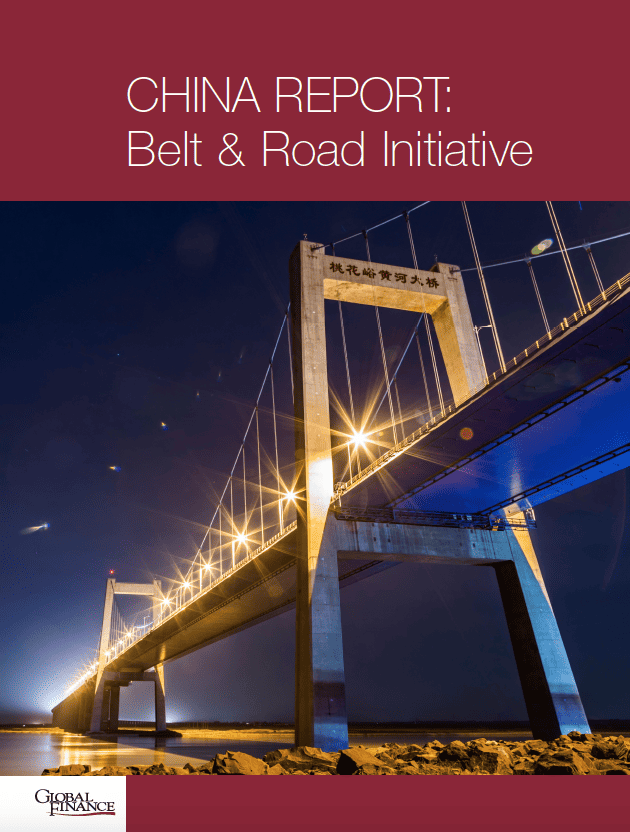Global Finance's editor Andrea Fiano explains what is at stake with China's ambitious, transnational infrastructure plan.

Click Here To View Full Supplement
It has been called the largest infrastructure plan of all time, with projects involving 68 countries, 65% of the world’s population, and over 40% of global GDP, passing through Central Asia and Russia. And all this with pledges of over $100 billion from China alone.
Launched only five years ago by the Chinese political leadership, the One Belt One Road initiative, OBOR, has expanded from projects related to the original Silk Road land path through countries neighboring China (One Belt), to a new Maritime Silk “Road” that goes by sea to link with other countries in Asia and Africa (One Road). The land and sea routes that nearly 150 years ago connected China and the Mediterranean are now part of a global initiative that needs to be assessed and analyzed for its goals, its hurdles, and its first results.It has been called the largest infrastructure plan of all time, with projects involving 68 countries, 65% of the world’s population, and over 40% of global GDP, passing through Central Asia and Russia. And all this with pledges of over $100 billion from China alone.
One of the key elements described in our stories is the scope of the OBOR initiatives, the many parties involved and its relevance for China’s role worldwide. It’s a project that brings opportunities but also risks for the countries—and possibly the banks—involved. The set of initiatives favored by Chinese President Xi Jinping involves not only many countries in different parts of the world, but potentially many financial institutions worldwide as well as some multilateral agencies, starting with the Asia Infrastructure Investment Bank.
We also look at the effects of OBOR on the Chinese currency, the renminbi, and the efforts to increase its use in global transactions. We also highlight the implications of OBOR for Japan, considering its geopolitical importance in Asia but also its needs for growth and economic diversification. Other countries, like India, have recently reiterated concerns that OBOR is not bilateral, and has not solved concerns about sovereignty issues with some of the population involved. Nevertheless, the OBOR initiative, and China’s global relevance for infrastructure projects, are growing very fast.

Andrea Fiano | Editor
afiano@gfmag.com



